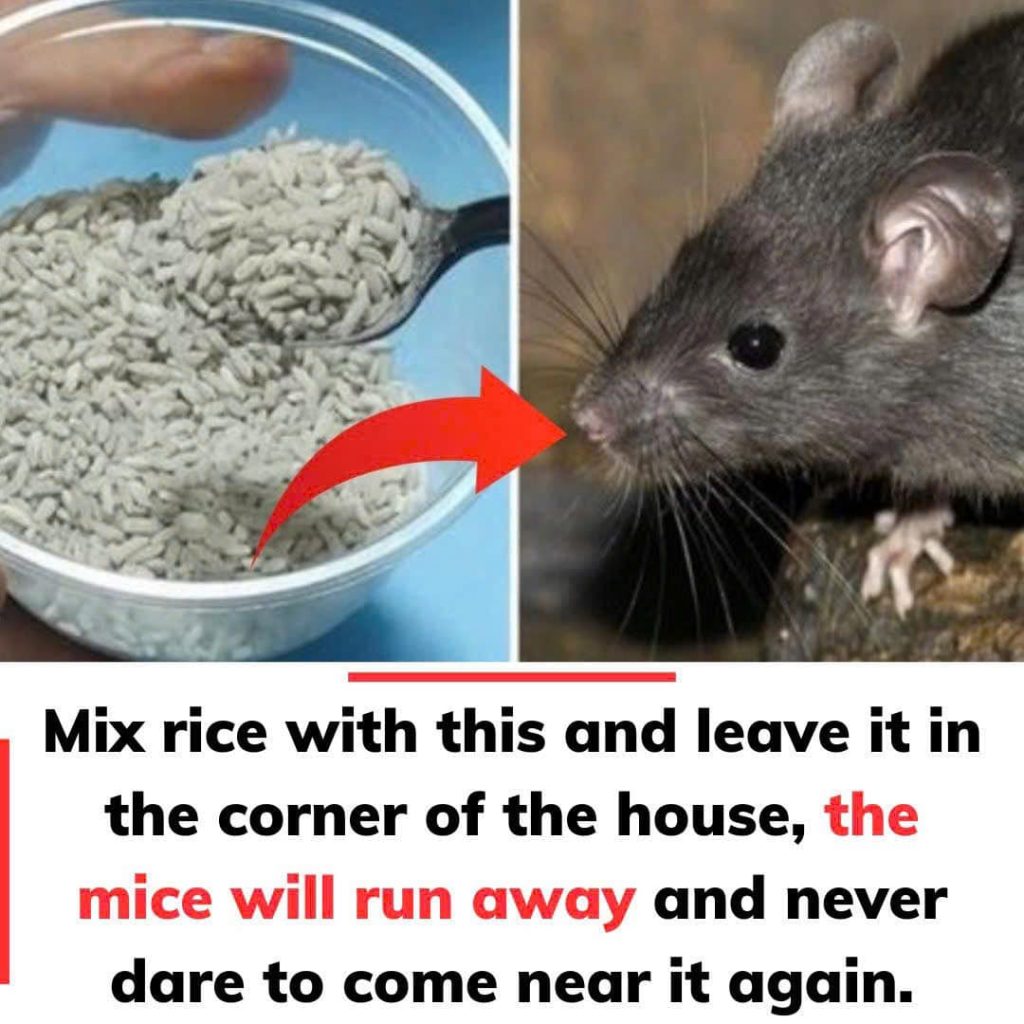A Simple Homemade Solution to Repel Mice: The Power of Rice and Natural Deterrents
Rodents like mice are not only a nuisance but can also pose health risks in your home. While commercial pest control options are available, they often come with chemicals that might be harmful to humans, pets, and the environment. That’s where natural, homemade solutions shine. One such method involves using rice combined with specific ingredients to effectively repel mice from your home.
This article explores the science behind this method, its effectiveness, and how you can create and use it to keep your home mouse-free.
Why Mice Are a Problem
Health Risks: Mice can carry diseases like hantavirus, salmonella, and leptospirosis, which can spread through their droppings, urine, and saliva.
Property Damage: Mice chew through wires, insulation, and furniture, causing significant damage over time.
Rapid Reproduction: A pair of mice can produce dozens of offspring in a year, making it crucial to address infestations early.
How Does Rice Work as a Mouse Deterrent?
Rice alone isn’t enough to repel mice. However, when mixed with other natural deterrents, it becomes an effective solution. Here’s why:
Absorption of Other Ingredients: Rice absorbs strong-smelling substances that mice dislike, such as essential oils or chemical powders. This makes it a convenient carrier.
Attraction and Deterrence: Mice are naturally curious about rice as a potential food source. When combined with deterrents, it lures them in and discourages them from returning.
Non-Toxic and Safe: Rice and natural additives are safe for humans and pets when used correctly, making this method ideal for households with children or animals.
What to Mix with Rice to Repel Mice
The key to this method lies in what you mix with the rice. Here are a few effective options:
Boric Acid:
A common ingredient in pest control, boric acid is toxic to rodents but safe when used properly. How to Use: Mix one part boric acid with three parts rice. Place small amounts in corners or areas frequented by mice.
Peppermint Oil:
Mice hate the strong smell of peppermint, making it an excellent natural repellent. How to Use: Add a few drops of peppermint oil to a bowl of rice. Stir well and place it near entry points.
Clove or Cayenne Powder:
Spices like cloves and cayenne irritate mice, discouraging them from staying in the area. How to Use: Combine rice with a teaspoon of clove or cayenne powder and spread it in corners.
Plaster of Paris:
When ingested, plaster of Paris hardens in the mouse’s stomach, making it a lethal yet effective solution. How to Use: Mix equal parts rice and plaster of Paris. Place the mixture where mice are active.
How to Use the Rice Mixture
Identify Problem Areas:
Look for signs of mice, such as droppings, gnawed items, or small holes. Focus on areas like kitchen corners, behind appliances, and near entry points.
Prepare the Mixture:
Choose your preferred deterrent and mix it with rice in a small bowl. Ensure the mixture is well-coated for maximum effectiveness.
Place Strategically:
Place small amounts of the mixture in shallow containers or directly in problem areas. Avoid placing it where pets or children can reach.
Monitor and Replenish:
Check the areas regularly to see if the mixture has been disturbed. Replenish the mixture every few days for consistent results.

